Author Archive
5 Steps to Choose the Best Landscape Maintenance Services
 If you are looking for the best landscape maintenance service, finding it will take more effort than merely looking in the phone book. The unique nuances and needs of your property, as well as the niche of each company will go a long way in determining which landscape maintenance provider to choose.
If you are looking for the best landscape maintenance service, finding it will take more effort than merely looking in the phone book. The unique nuances and needs of your property, as well as the niche of each company will go a long way in determining which landscape maintenance provider to choose.
Don’t Get Hooked by a Landscape Maintenance Low Price
Some landscape maintenance services will submit a very low bid in an effort to win your job. However, these bids are often accompanied by low quality project results. Look for bid contractors who will use high quality materials and safe equipment at all times. The quality of the landscape maintenance service provider’s craftsmanship is always worth the higher cost.
Check Track Records
Do not hesitate to contact the prior customers, reviews and references of various maintenance services. Each should be willing to provide you with a reference list who can testify to the quality of the work. Try to find a customer who had a job performed within the past year at an equal or a greater value than your current job. This way, you will be able to make an informed comparison when deciding on which landscape maintenance service is the best for your property.
The Type of Landscape Maintenance Work
Each landscaping company has a specialty area. Some are good at any number of projects. The key is to find the one that has a history of installing or maintaining the area of your yard that needs attention. Communicate exactly the type of work that you want done and your budget limitations. This will help you narrow your search to find candidates who can handle the specific challenges involved in your nuanced yard. Keep in mind that some landscapers offer maintenance services only, so vet each company thoroughly before progressing to more detailed matters.
Qualifications
Make sure that each landscape maintenance service is properly insured so that you are not liable for accidents that occur on your property. Ask for valid proof of the insurance before work commences. Find out the professional affiliations that the companies belong to as well. If they are active in professional associations, they are more likely to stay abreast of industry trends. Then, find out of they are licensed. Those that are certified by the state will provide proper employee training and will be held to the highest legal standards.
Build a Criteria List
Contact each potential landscape maintenance service and ask them a series of questions. You can mark off whether each meets your specific criteria. The one with the lowest bids and the most check marks will be awarded the project. Your checklist should contain key requirements like a company that is properly certified, licensed and insured. Get a written contract that accounts for a project price, material list and quality guarantees before work starts. Also, be sure to ask each candidate’s references whether the companies were able to complete the projects within the originally estimated timeline. Once you have gathered all of the pertinent information, you can make an informed decision about which landscaping company to choose.
Landscape Service Niches
Each landscape maintenance service company tends to do at least one thing very well. Some do it so well that they develop a niche in the field. If you are looking for a company that handles yard maintenance, repair, irrigation and water saving landscapes, give us a call today.
Picking the Best Landscape Maintenance Services
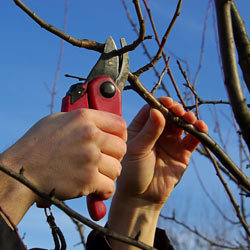 Landscape maintenance goes well beyond regular lawn care in ways that might surprise you. For starters, if you’ve ever wondered why local parks and upscale homes look so great year round, the reason is probably regular landscaping.
Landscape maintenance goes well beyond regular lawn care in ways that might surprise you. For starters, if you’ve ever wondered why local parks and upscale homes look so great year round, the reason is probably regular landscaping.
From pruning and lawn care to a reliable irrigation schedule and weed-reduction services, a landscape maintenance company remains an affordable way to turn heads and quickly increase your home’s curb appeal.
Myriad Benefits of Landscape Maintenance
Contracting out your landscape maintenance services, for instance, can increase your home’s resale value by over ten percent virtually overnight. A landscape maintenance company can also assist property managers lease space and offer a more professional face to the public.
A landscape maintenance company can work to expand on what’s already great about your home’s lawn and garden as well. Services like lawn edging, mulching and irrigation significantly enhance your home’s curb appeal and can give you more reasons to take daily pride in your home.
Pruning your home’s bushes and snipping overhanging branches are additional ways that a landscape maintenance company gives value back to homeowners. In short, a landscape maintenance company that can help you get your lawn, garden and walkway in shape is a win-win for you and your neighbors.
Unique Services Available to Homeowners
If you’re somewhat fuzzy on the nuts and bolts of irrigation, mulching and the right watering schedule for your home’s soil and climate, then you’re just like millions of homeowners from around the country.
A landscape maintenance company, fortunately, has decades of experience testing for proper pH levels, installing and/or maintaining sprinkler systems, and removing weeds or unsightly overgrowth from your yard.
If a landscape maintenance company determines, for example, that your pH levels are out of whack, then a lime treatment can be used to get your lawn back on its feet.
This is all a huge boon for homeowners looking for a little extra time on the weekends as well as property managers who want to spend less time worrying and more time leasing space.
Interestingly, some studies even show that properly placed trees and plants can lower your HVAC costs by as much as one-fifth. This might seem shocking until you consider the heat gain during the hottest months – or the heating costs squandered to poor ventilation – due to a lack of shade around your home or commercial property.
From relatively simple jobs like mowing and mulching to larger projects like aeration and irrigation, a full-service landscape maintenance company is truly a one-stop-shop for all of your home’s landscaping needs.
Hiring a Landscape Maintenance Company
Although you can probably find dozens of companies with mowers and leaf blowers in your area willing to provide simple services, a landscape maintenance company can provide more sophisticated services (e.g., irrigation) that bring experience and professional know-how to bear.
Many states even require that landscape maintenance companies have licenses before offering their services to the public. This coupled with the fact that a full-service landscape maintenance company can help with pest and weed control, sprinkler systems and pH detection makes this an easy call.
To reiterate, a landscape maintenance company can help homeowners and property managers in crucial ways – improving curb appeal, enhancing your home’s energy efficiency, and eliminating pests and weeds.
If you’ve always wanted a lusher lawn, contact the professionals at Xeriscape today for more information about a host of maintenance, repair and irrigation services.
Go Native, Save Water: Xeriscape Gardening
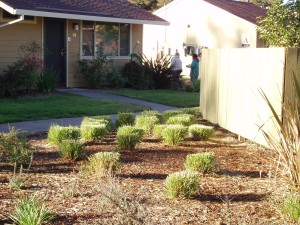 The information age has brought with it a flood a varying techniques in the fields of landscaping, gardening and ecological design. In keeping with the sustainable nature of the best of them, xeriscape gardening is defined by its optimal use of a minimal amount of water. This approach to gardening has been developed in the arid regions in the world, chiefly in the American mid-west, as a natural response to the climate. Xeriscape is most effective when the need for supplemental irrigation is eliminated and the design of the garden promotes symbiotic relationships that provide benefits. Environmental conservancy is xeriscape gardening’s top priority, but aesthetic design has received as much consideration. At its best, xeriscape becomes a melding of both utility and beauty.
The information age has brought with it a flood a varying techniques in the fields of landscaping, gardening and ecological design. In keeping with the sustainable nature of the best of them, xeriscape gardening is defined by its optimal use of a minimal amount of water. This approach to gardening has been developed in the arid regions in the world, chiefly in the American mid-west, as a natural response to the climate. Xeriscape is most effective when the need for supplemental irrigation is eliminated and the design of the garden promotes symbiotic relationships that provide benefits. Environmental conservancy is xeriscape gardening’s top priority, but aesthetic design has received as much consideration. At its best, xeriscape becomes a melding of both utility and beauty.
The Principles of Xeriscape
As conceived by Denver Water, xeriscape gardening’s most revered proponent, these seven guiding principles provide the foundation for all considerations within the field. Each principle holds an entire discipline within itself, which means that there is always more to learn and improve upon in this field.
- Planning and Design are the cornerstones of effective gardening, which requires careful attention to your specific environment.
- Soil Management is about knowing what nutrients your selected plants need and what nutrients are available in the soil. Composting is a great way to reinvigorate malnourished soil.
- Plant Selection is an integral part of xeriscape gardening. Thousands of species exist in arid conditions, each with benefits and beauty to offer.
- Turf Minimalism is crucial because the water needs of most grass lawns makes them impractical for dry climates.
- Diligent Irrigation may be the reason you’re interested in xeriscape gardening to begin with. Water is an invaluable resource and appropriate use of it is essential to environmental conservancy.
- Mulch can be composed of several materials such as leaves, wood chips, pine needles and bark. It is spread over the surface of the soil to help with water retention, fertility, prevention of erosion, and reduction of weed growth.
- Maintenance in the form of weed pulling, mulching, and general upkeep should be combined with constant observation to check if your garden layout is working to its full potential.
The Benefits of Xeriscape
- Reduced Water Consumption is both the key aspect of xeriscape gardening and a great benefit of it. It means using less water and making better use of it. Not only will this save you money, but you will be helping your community and environment as well. Re-appropriating rainwater can help you prevent evaporation and runoff, and your garden’s layout can be optimized for better use of it.
- Less Maintenance is required from a xeriscape garden. Much less fertilizer is used, which helps urban runoff pollution, lawn mowing becomes nigh unnecessary, and simple irrigation systems can handle all of your watering needs.
- Pest Control is an added benefit of a really well thought out garden layout. Certain xeriscape friendly plants ward off insects, while prickly cacti do the same for intrusive mammals. Plant selection also enables you to create a sanctuary for desirable birds and insects.
- Property Values Rise when you drought-proof the terrain around your home. Likewise, the design opportunities available to xeriscape can make for some exquisite gardens.
There are an abundance of tips and tricks available for do-it-yourself xeriscape gardening, but expert consideration reaps the true benefits of the art form. Xeriscape specialists develop an uncanny ability to read an environment and discern its possibilities. With a little help, and dedication to the sustainability principles of xeriscape you could be looking at a lower water and power bill, a productive and efficient garden, and a beautiful area in which to relax.
Sprinkler System Design That Saves You Money
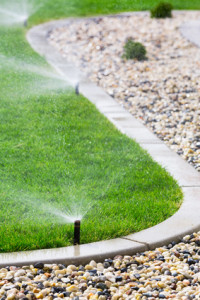 When it comes to keeping your landscaping looking lush and healthy, your sprinkler system design could make all the difference. If your plants are getting too much water you may encounter problems such as mold, rotting, and even yellowing of your plants. Likewise, if your plants are not getting enough water, they can quickly turn yellow and brown, dying back and leaving you with large dead patches in your garden.
When it comes to keeping your landscaping looking lush and healthy, your sprinkler system design could make all the difference. If your plants are getting too much water you may encounter problems such as mold, rotting, and even yellowing of your plants. Likewise, if your plants are not getting enough water, they can quickly turn yellow and brown, dying back and leaving you with large dead patches in your garden.
Sprinkler system design needs to meet all of your plants different water needs. This can be tricky, especially if you have different types of annuals, perennials, shrubs, and trees, grouped together throughout your garden. A small shrub may need water once a week, whilst the small annual flowers you have growing around the shrub may need to be watered daily, finding that balance can be hard.
Why Hire a Gardener or Landscape Team for Your Sprinkler System Design
There are many complexities when it comes to the best sprinkler system design for your garden, hiring an experienced gardener will ensure that your garden is having its exact watering needs met. Here are some of the things a good gardener will look for when it comes to sprinkler systems.
- When it comes to sprinklers there are many different types, choosing the right sprinkler head can make sure that your garden is getting the right amount of water, protecting your plants from too much or too little water. An experienced gardener or landscape expert will know which sprinkler head to use, in which areas of your garden.
- Water pressure needs to be considered when it comes to a sprinkler system, your water pressure should be evaluated and upgrades to the system should be made to account for either a lack of pressure, or too much pressure.
- Pipes will need to be placed throughout your lawn and garden. By having a professional design the pipe layout and lay the pipes, you can be sure that your current garden and lawn will be protected. You will also have peace of mind knowing that your systems pipe design will help you reduce your water usage, whilst providing your garden with the water it needs.
- When it comes to your sprinkler system design the placement of each sprinkler head is important. As previously mentioned there will be areas in your garden that need less water, while other plants or areas may need a lot of water on a daily basis. By accounting for run off, sprinkler direction, and which plants need more or less watering, an experienced gardener can place your sprinkler heads in the right position to benefit all plants in your garden.
- If you would like your sprinkler system design to be as low maintenance as possible, you may want a system that is automated. Hiring a gardener to design, install, and set up your system will make sure that your sprinkler system is running at a time that gives your garden the best chance of soaking up the water. This will make sure that you are not losing valuable water to the heat of the day, or causing disease to spread through your garden.
Contact Us Today for Your Sprinkler System Design
If you have been considering sprinkler system design for your home or business, contact our landscape maintenance company today. Our team of garden and landscape experts can help you get the best sprinkler system design, keeping your garden and landscape healthy no matter the season.
10 Ways to Save Water in Your Yard
 As a homeowner or business owner, it may seem impossible to keep your yard attractive and thriving while trying to save water. Whether your region is going through a drought, city water prices are through the roof, or your area is implementing bans on watering yards, learning how to save water is becoming essential.
As a homeowner or business owner, it may seem impossible to keep your yard attractive and thriving while trying to save water. Whether your region is going through a drought, city water prices are through the roof, or your area is implementing bans on watering yards, learning how to save water is becoming essential.
Here are 10 ways you can save water in your own yard:
1. Implement Xeriscape Landscaping
For decades, xeriscape has been practiced by the landscaping industry. This concept allows you to have a livable outdoor space that doesn’t require major amounts of water. While xeriscapes still need to be regularly maintained, their smart designs save water, as well as your time and major backaches in the long run.
But don’t try to implement the principles of xeriscape alone. Your local landscaping company will be your best resource for establishing one. According to LandscapeNetwork.com, “For anyone contemplating a xeriscape, selecting an experienced designer is vital to success… The skill set in demand is a firm knowledge of both local native species used for landscaping, plus the array of imported species from dry climates around the world that expand our options considerably. There is no better way to make your home environmentally green and create a model landscape for water conservation.”
2. Plant Native Plants or Drought-Resistant Plants
Use native plants in your yard to save water. These plants are acclimated to your climate and are used to your region’s rainfall. Drought-resistant plants like daylilies contribute bright, cheery colors to your yard’s design without hogging water.
3. Use Mulch
Mulch such as wood chips or lava rock (not black plastic) is handy at preventing weeds. However, it also keeps moisture in the soil. It shades soil so that the soil’s temperature doesn’t heat up, translating to water savings.
4. Adjust Sprinkler Irrigation Systems
If you use sprinklers but they’re not adjusted properly, they won’t save water. Mist settings may cause water to blow in the wind or evaporate before it reaches your thirsty yard. Settings with larger droplets ensure that the water is reaching your plants. Make sure sprinklers are pointed to your lawn and not spurting water wastefully at sidewalks.
5. Yard Watering
The time of day that you water plants is important. Plan on watering around cooler times of the day like dusk or dawn. This will ensure that you save water since the water isn’t merely evaporating before it hits the ground. Don’t water when it’s windy.
6. Harvest Rain Water
Rainwater harvesting means you accumulate and deposit rainwater on-site so it doesn’t merely create run-off. For example, rain barrels can capture rain coming off your roof. You can save water and money simultaneously!
7. Mow the Grass
If you mow your grass too much, you could be contributing to water waste. Keep your main lawn around 3 inches tall so the soil retains water but water isn’t merely soaked up by tall grass (which can also harbor pests).
8. Pay Attention to Fertilization Times
Don’t fertilize your lawns during hot, dry weather. This could exacerbate current drought problems. Use a slow-release fertilizer to save water.
9. Create Decks and Paths
Add patio stones, gravel paths, and decks to decrease the amount of area in your yard that needs to be watered. Your landscaping company will have ideas on how these items will look great in your yard but contribute to a functional design too.
10. Form Ditches and Basins
Form ditches and basins around your plants. This practice will keep a well of water near your plants’ roots.
How a Landscaping Company Can Drought-Proof Your Yard
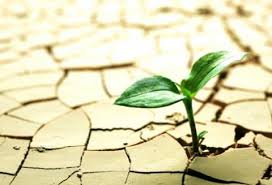 Landscaping companies are ready to help you be more water wise with a xeriscaping landscape. Xeriscaping is the horticulturist term used to describe the practice of developing a landscape design that works to reduce or eliminate irrigation and watering. The best designed xeriscaped landscapes require little to no additional watering- all the water they need comes from the natural environment. Expert landscaping designers know how to implement these water smart plants into a beautiful landscape for any home or business. The secret to a landscaping company having a great design is the plants they use. With water supplied dwindling and the threat of a water crisis looming large, more and more homeowners and businesses alike are turning to xeriscaping as an option to help conserve water.
Landscaping companies are ready to help you be more water wise with a xeriscaping landscape. Xeriscaping is the horticulturist term used to describe the practice of developing a landscape design that works to reduce or eliminate irrigation and watering. The best designed xeriscaped landscapes require little to no additional watering- all the water they need comes from the natural environment. Expert landscaping designers know how to implement these water smart plants into a beautiful landscape for any home or business. The secret to a landscaping company having a great design is the plants they use. With water supplied dwindling and the threat of a water crisis looming large, more and more homeowners and businesses alike are turning to xeriscaping as an option to help conserve water.
Xeriscaping has long been used and loved in much of the dry regions of the United States, and even more regions are beginning to open up and discover the benefits of water wise gardening. There are four main benefits that come from having a landscaping company help you design a xeriscape plan for your yard.
Benefits of Using a Landscaping Company
Financial Benefits
Xeriscaping has become popular with many due it the many amazing financial benefits. Water costs money and along with the water also comes other tasks such as fertilizing and weeding. Over the course of a year, a great deal of money is spent on these tasks. When you have a xeriscape design, however, all this cost is drastically cut and your landscaping company can end up saving you money!
Environmental Benefits
Xeriscaping comes down to you and the landscaping company choosing plants that are appropriate for your climate. Many plants that naturally grow in an area are drought tolerant and suited for the natural climate and seasonal changes of an area, which is why native plants are often used in these xeriscape designs when a landscaping company designs them. Xeriscaping usually requires switching out grass and many other common shrubs and plants and using water friendly plants and substituting hardscape designs in place of lawns. This helps save water and also helps preserve natural plants that belong in the area; you can ask your landscaping company to use native plants as much as possible.
Outdoor Activity
Supporters of xeriscaping often say that it is a lot of fun. It might require a little more work at the start but once your xeriscape yard is in place you can kick back and enjoy it, instead of spending hours every week mowing, raking weeding, watering, and fertilizing. It also help keep you active by making it easier to get outside and have fun- no lawn to cut before a game of tag football and no flower beds to worry about when the dogs run outside to play. Xeriscaping landscape designs help stimulate outdoor activity and involvement.
Plenty of Beautiful Plants
Many people who are considering having a landscaping company put in a xeriscape design are worried that their yard will look drab and boring. While the most commonly seen example of a xeriscape-friendly plant is indeed the cactus, they are far from the only plants that a landscaping company can use. Any drought-resistant plants and native plants can work well. Common plant choice include agave, liriope, juniper, thyme, rosemary, sage, dill, black walnuts, garlic, Jerusalem artichokes, and many more.
Discover the many benefits of xeriscape design today and talk to your landscaping company today to see what they can offer you as you work to design a water wise and plant friendly landscape for your home or business!
Front Yard Flower Bed Ideas – DK Landscaping
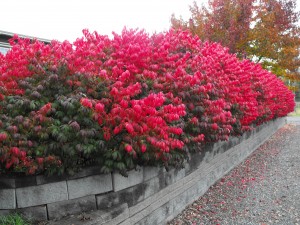 Want to make your home look calm, inviting, and happy? Add flower beds to your property for constant color. Use the beds to delineate property or break up bland expanses of lawn grass and dirt. Finding flower bed ideas is simple, but you should be sure of what you need and why. There are so many possible flower bed ideas that you can get easily bogged down in details if you start to look for designs without taking issues like drought and level of care into consideration. Pinpoint non-negotiable issues like those first to make designing your front yard a lot more efficient.
Want to make your home look calm, inviting, and happy? Add flower beds to your property for constant color. Use the beds to delineate property or break up bland expanses of lawn grass and dirt. Finding flower bed ideas is simple, but you should be sure of what you need and why. There are so many possible flower bed ideas that you can get easily bogged down in details if you start to look for designs without taking issues like drought and level of care into consideration. Pinpoint non-negotiable issues like those first to make designing your front yard a lot more efficient.
Drought-Proof Flower Bed Ideas
Drought is probably going to be one of your main considerations when looking at flower bed ideas. Many areas of the country are experiencing water shortages, and anything you plant has to be able to deal with a lack of abundant water. That doesn’t mean you have to plant cacti — just look for cultivars of flowers that have been bred to be less water-needy. Native flowers are always a wonderful choice in this case as they are already somewhat adapted to their region’s fluctuating water supplies. Plant breeders have been working on drought- and disease-resistant cultivars of all sorts of plants for years, and it’s become easier to find these in garden centers and from landscaping companies when looking at flower bed ideas.
Easy Care Flower Bed Ideas
Ease of care is another big consideration for flower bed ideas. Even if you have a landscaping company taking care of most of your garden, you’ll still have to do some minor care yourself. If you don’t feel up to that, you’ll want flower varieties that can handle benign neglect. Again, native flowers tend to be a little better for this, though there are easy-care species from all over the country if you’d like more variety for your flower bed ideas.
Location Ideas For Your Flower Bed
Now take a look at location to further refine your flower bed ideas. Flower beds that will be near the street need to be able to handle road salt spray, for example, if your area tends to have occasional snowfall in spring or fall. That’s not so much of a problem with annuals, as you’d be removing them anyway, but if can be for perennial or biennial flowers.
Flower bed ideas for spaces near fences can have species of varying heights, so those plants nearer the fence should be taller. The shorter flowers near the edge of the bed may need to be shade-tolerant if the bed is positioned where the fence or taller plants might block a lot of the sunlight.
Reduce Insects
Flowers planted next to the house need to be pest-resistant if possible. While it is impossible to guarantee that a flower will never attract a bug, if you have flowers that tend to attract pests, those pests could get into your house. Ask your garden center or landscaping company to show you flowers that have a reputation for repelling insects, too, such as marigolds, petunias, and nasturtiums. As you come up with ideas for other areas of your yard, you can work a few of these plants in so that you can reduce the number of pests you have to deal with overall. Start talking to landscape design companies about flower bed ideas and species that fit what you need for your yard’s environment, and you’ll have a beautiful yard in no time.
Xeriscape Landscaping in Sonoma County
 Xeriscape Why?
Xeriscape Why?
Xeriscape became a word invented by Denver Water Department when forbidding watering in summer. Sonoma residents must:
- select plants appropriate to your climate,
- mulch plants to help them retain moisture
- care for your plants properly
- keep plants healthy
- Plant shrubs, trees and other attractive plants where grass used to be.
The foregoing basics reduce water consumption 60 percent. Instead of a monotonous expanse of lawn in shades of green to brown, your yard can become rich with variety and interesting to observers. Filling your yard with a variety of hardy drought tolerant plants indigenous to your area is making a pact with Mother Nature that you are on her side. You are now going to help her with a bounty of beautiful plants she worked over 1,000 years to perfect for your exact piece of land.
Prepare the Yard Soil
- Pick up a fistful of thoroughly wet soil from your yard and squeeze it into a ball. The ball will stay formed or will crumble apart.
- Add organic material to your soil if the ball of dirt crumbled quickly. Compost or manure helps crumbly soil retain moisture.
- Add sand or ground bark to the soil if the ball of dirt formed a tight, hard ball. Hard, clay soil allows all water to run off quickly before it even has a chance to reach a plant’s roots.
Grow Plants Nature Designed for Sonoma
- Grow plants native to the Sonoma parched earth. They adapted mechanisms over hundreds of years to tolerate and cope with your weather and water gauge, so require little watering. Landscape companies can recommend plants for you so that your unique taste can still be displayed in your xeriscape garden.
- Plant trees suited to dry landscaping, such as California buckeye, which though their seeds are poisonous, make great shaped trees. The U.S. Department of Agriculture plant hardiness dictates zones 6a and higher for Sonoma.
- Plant drought-tolerant xeriscape shrubs like California wild lilac, best in USDA zones 5b or higher with lovely flowers. California wild lilac can grow in either full sun or partial shade.
- Choose drought-tolerant ornamental grass like blue lyme for full sun or light shade. This clumping grass is very hardy, with gray-blue foliage and grows up to 4 feet tall with very little water.
- Plant xeriscape succulents in your hard that will store water in fleshy leaves and need little water from you. The Century plant, or Agave Americana, grows well in USDA Zones 9a through 11 in full raging sun or a little shade. Reaching 8 feet in height and 12 feet wide. They provide a focal point if you just make sure you have a safe distance between its spiny leaves and foot traffic.
Follow Xeriscape Principles
- You must cover your entire garden with a layer of mulch or compost so that the need for moisture due to evaporation is nil. Compost has nitrogen, giving plants nutrition and improving texture of your xeriscape yard soil.
- Water in early morning or evening to minimize any evaporation. Drip irrigation systems are the most effective method for Sonoma.
List of Zero to Low Water Need Plants for Sonoma Area
There are many drought tolerant plants needing no supplemental summer water once established. While these are uber-drought tolerant xeriscape plants, some will do a bit better with some water. Some fine shrubs that meet these criteria are:
- Arbutus Onedo
- Acca Sellowiana
- Baccharis Pilularis
- Buxus
- Callistemon spp.
Contact your local landscape company to learn the multitude of xeriscape plants that can beautify your home without watering!





